Foxgloves are popular in a host of planting styles from traditional cottage gardens to the contemporary perennial plantings of Piet Oudolf and the New Perennial movement.There are 25 species and forms in the genus Digitalis, found throughout Europe, northwest Africa and central Asia in a range of habitats from woodland clearings to sub-alpine meadows. The only true biennial is Digitalis purpurea and its cultivars, although some modern purpurea foxglove hybrids are classed as short-lived perennials.
Most foxgloves, including ancient species and modern hybrids, are perennials, whose lifespan varies according to the growing conditions but is usually three to five years.
Perennial foxglove species are divided into two groups: herbaceous perennials, such as Digitalis grandiflora and Digitalis lutea, which die down during cold winters and those retaining an evergreen rosette, including Digitalis parviflora and Digitalis ferruginea.
You may also like
When do foxgloves flower?
The foxglove species flower from early to midsummer but the new hybrids are sterile, so flower for a longer period – from spring to autumn and beyond during mild winters – because they do not set seed. They also tend to swap elegance for robustness, producing denser spikes of more upright flowers.
Where to plant foxgloves
The natural elegance of all the cultivated species can be used to add lightness, romance or structure, depending on the scheme. Smaller species, such as Digitalis lutea and long-flowering modern hybrids, including Digitalis purpurea ‘Dalmation Peach’ with its subtle, pale-apricot flowers, are ideal for growing in pots in courtyard gardens.
Larger cultivars or hybrids need moisture-retentive, free-draining soil, ideally loosened with a fork before planting, in sun or part shade.
Digitalis purpurea and its cultivars will grow on clay with nothing more than a mulch of well-rotted organic matter, but do not reach the same stature as those on richer soils.
Species such as D. ferruginea and D. lanata prefer hotter, drier and more gravelly soil. They all dislike competition from other plants, so do not plant them too close together or expect them to compete with vigorous perennials. They are generally problem free.
When to plant foxgloves
Deadheading foxgloves
Propagating foxgloves
Foxgloves, particularly the sterile hybrids whose inflorescences naturally branch, can be propagated from 5cm ‘heel’ cuttings. Because you are rooting a potential flowering stem, it will try to produce flowers, so these should be pinched out as they form,
then the lower buds will form growth.
Divide sterile cultivars every two or three years, cut them back to ground level after flowering and divide when the new shoots appear.
How and when to sow foxglove seeds
Seeds can be sown at almost any time of year. Transplanted into pots, they are ideal for filling gaps in borders if sown from six to 12 months in advance. The best times to sow seed are January, for spring the following year, and late August, for a late-summer flowering.
If you can leave plants to self-seed in borders you’ll find they have the knack of finding the perfect spot to bloom. In my garden, they have taken up residence at the base of a dark yew hedge. After flowering, remove the seedheads and scatter the seeds
elsewhere in the garden or collect them in a paper bag for later sowing.
Foxgloves hybridise so if you grow several selections you will end up with unpredictable colouration unless groups are isolated from each other. Colour forms can be selected after germination, those with purple tints to the leaves will be purple, those without will usually be white. Seeds from the lower capsules on a spike are more ‘true to seed’.
The best foxgloves to grow for colour and structure
BIENNIAL FOXGLOVES
Digitalis 'Martina'
A recent introduction producing multiple elegant spikes of soft-pink flowers, it is ideal in containers or borders. Cut back fading flower stems to prolong the flowering season.
Height 1m. Hardiness USDA 4a-8b.
Digitalis 'Sutton's Apricot'
Apricot and deep-pink buds gradually open to soft apricot-pink foxglove flowers. Flourishes in sun or part shade and self-seeds freely in undisturbed soil. Excellent cut flower.
Height 1.2m. Hardiness RHS H7, USDA 4a-8b.
SQUIRREL_13100328
Digitalis 'Pam's Choice'
Eye-catching and dramatic with sturdy spires of large, white flowers with a rich maroon throat. Bred from seed of a foxglove found on a compost heap at Wayside Gardens in South Carolina.
Height 1.5m. Hardiness USDA 4a-8b.
Digitalis purpurea Foxy Group
This compact group of foxgloves produces a mix of pink and white blooms with bold, purple speckled throats, all around the stem. Blooms in the first year from a late-winter sowing. 90cm.
Height RHS H7. Hardiness USDA 4a-8b.
Digitalis purpurea 'Purple Carousel'
Densely packed spikes of deep purple-pink foxglove flowers with attractive, raspberry-pink blotching in the throat. Produces blooms all-round the stem, making it ideal for containers.
Height 80cm. Hardiness USDA 4a-8b.
Digitalis purpurea 'Glittering Prizes'
Height 1.8m. Hardiness USDA 4a-8b.
Digitalis purpurea f. albiflora
Gertrude Jekyll used this form extensively in her white planting schemes. The pure-white foxglove flowers, with light freckling in the throat, are ideal for illuminating dark corners.
Height 1.5m. Hardiness RHS H7, USDA 4a-8b.
SQUIRREL_13100321
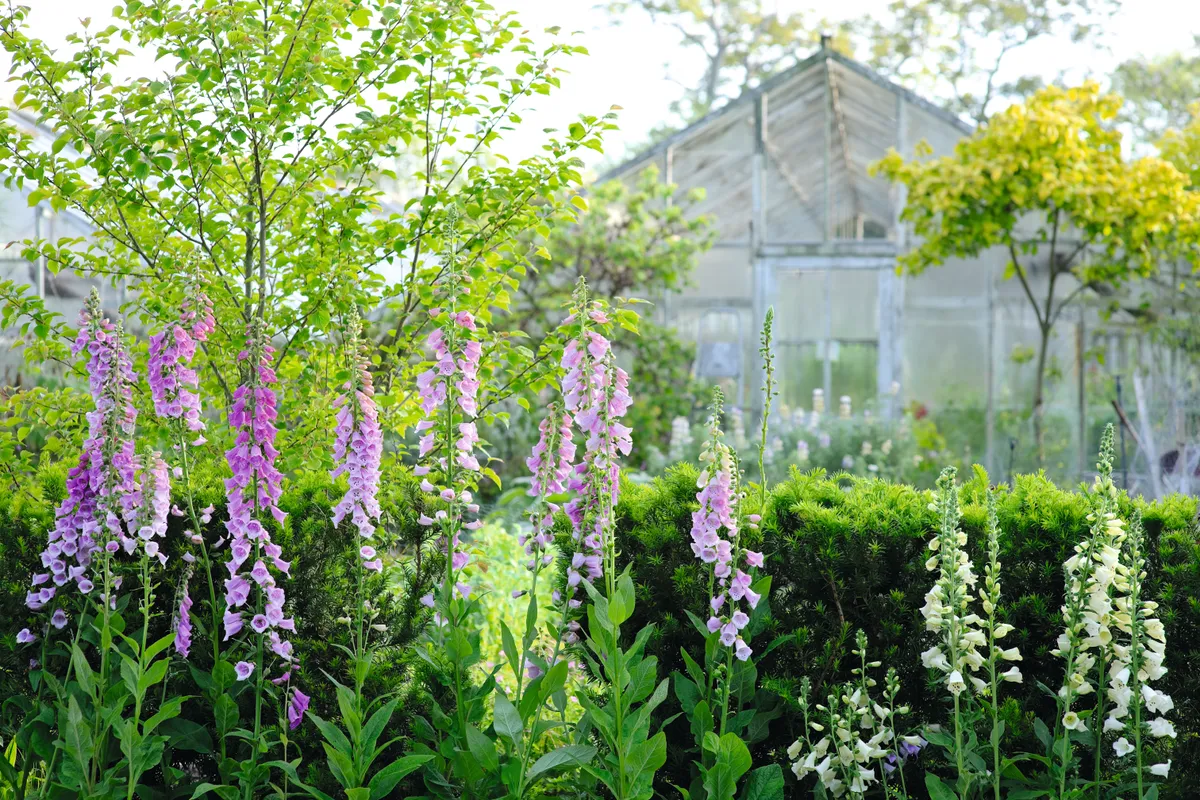
The best size to buy for successful growing on is in 9cm pots. Most will flower the same year if planted before May. If you don’t want the seed, cut back the flowering spikes after flowering and new flowering side-shoots will form. Alternatively, leave them to set seed, which you can then sow around the garden. Read our guide to deadheading.
Find Digitalis purpurea 'Purple carousel' through the RHSAn elegant, majestic plant with dense spikes of large flowers in shades of purple to lilac, rose and white, with attractively mottled throats. Ideal for the back of a border or as a cut flower.Find Digitalis purpurea 'Glittering Prizes' through the RHS
PERENNIAL FOXGLOVES
Digitalis lutea
SQUIRREL_TEXT_13100320
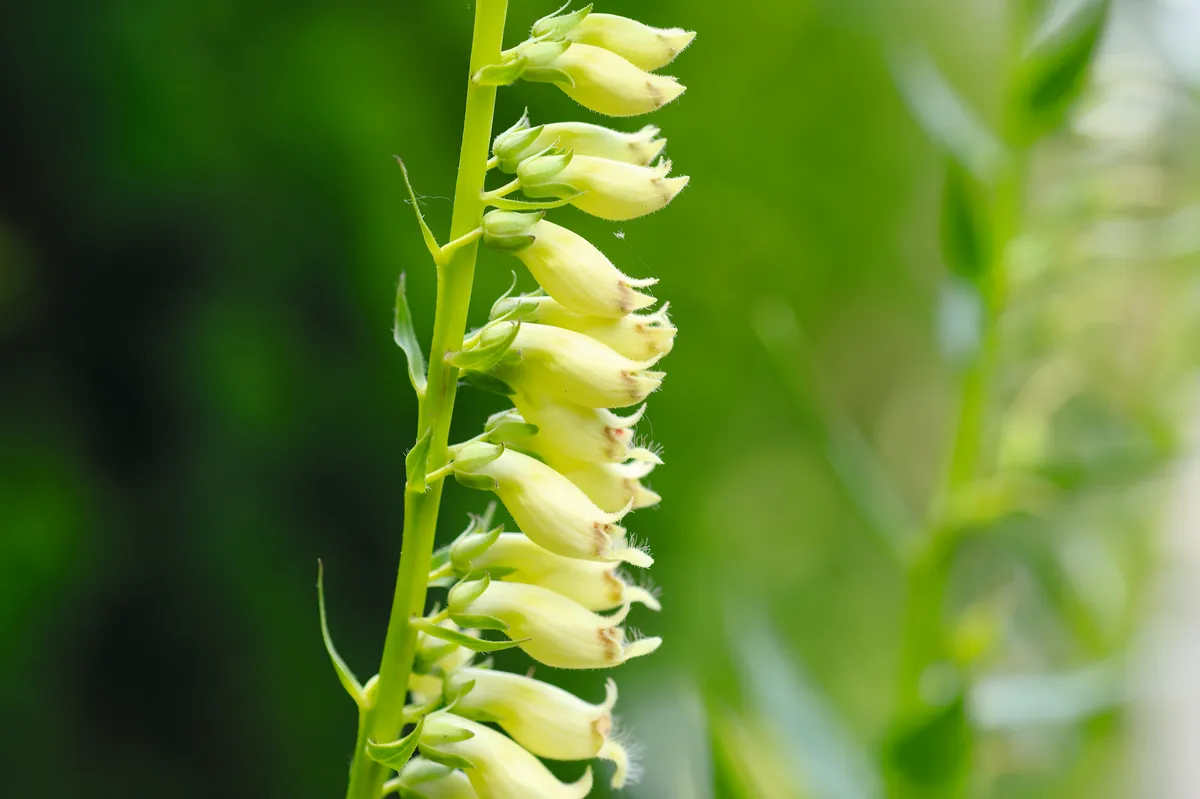
A small foxglove, ideal for containers or the front of a border, with slender spikes of primrose-yellow flowers. Hardy and thrives in sun or shade. Comes true from seed, so good for naturalising.
Height 60cm. Hardiness RHS H6, USDA 3a-8b.
SQUIRREL_13100320
Digitalis purpurea 'Dalmatian Purple'
SQUIRREL_TEXT_13100319
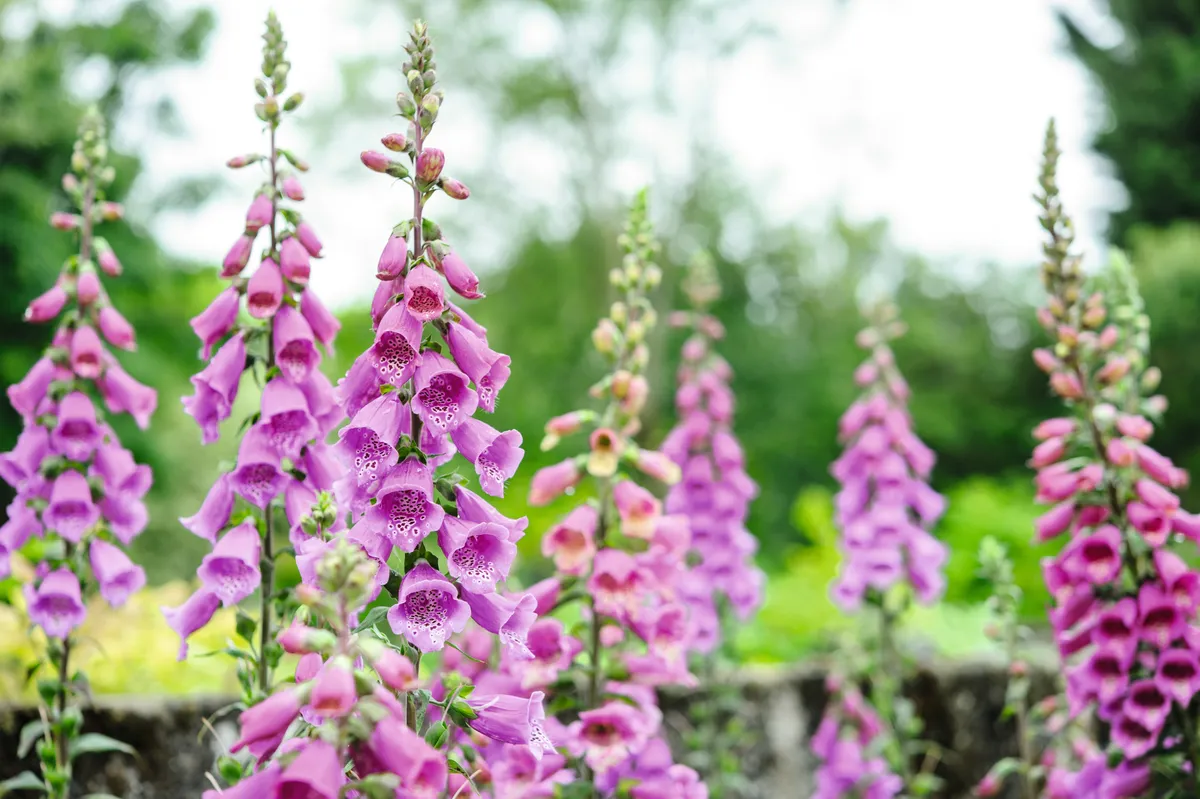
An elegant, short-lived and well branched perennial foxglove, that flowers in its first year, with dense, sturdy spikes of evenly spaced, outward-facing flowers. These are lavender purple with maroon interior spotting and evenly spaced around an upright stem. Self-seeds freely.
Height 90cm. Hardiness USDA 4a-9b.
SQUIRREL_13100319
Digitalis 'Polkadot Polly'
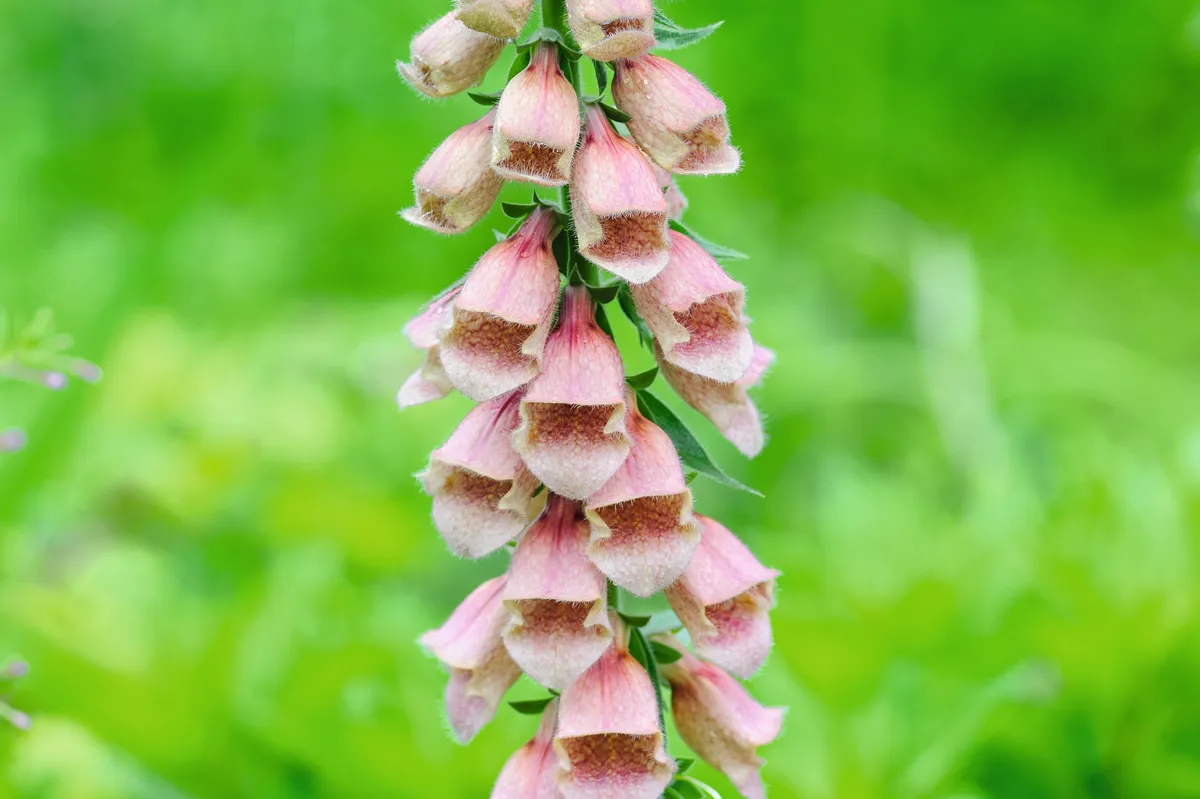
Another robust plant from the Polkadot series, producing masses of hanging, pale-pink flowers on willowy stems. A sterile hybrid, it has a long flowering season from early summer onwards.
Height 90cm. Hardiness USDA 4a-8b.
Digitalis 'Polkadot Pippa'
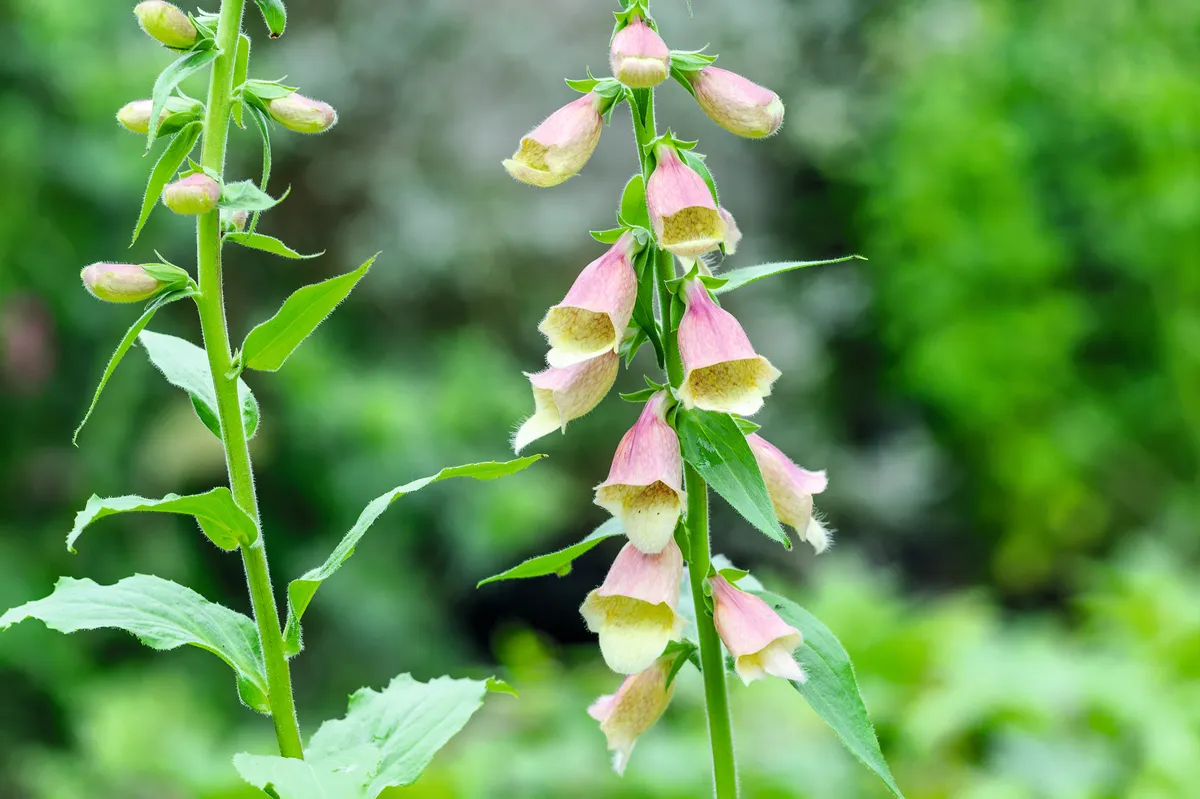
A robust foxglove plant producing intense rose-coloured flowers, with a golden throat and pointed lip. Flowers from late spring to first frosts. Flourishes in moist, well-drained soil in sun or part shade.
Height 80cm. Hardiness USDA 4a-8b.
Buy Digitalis 'Polkadot Pippa' from Hayloft
Digitalis purpurea 'Snowy Mountain'
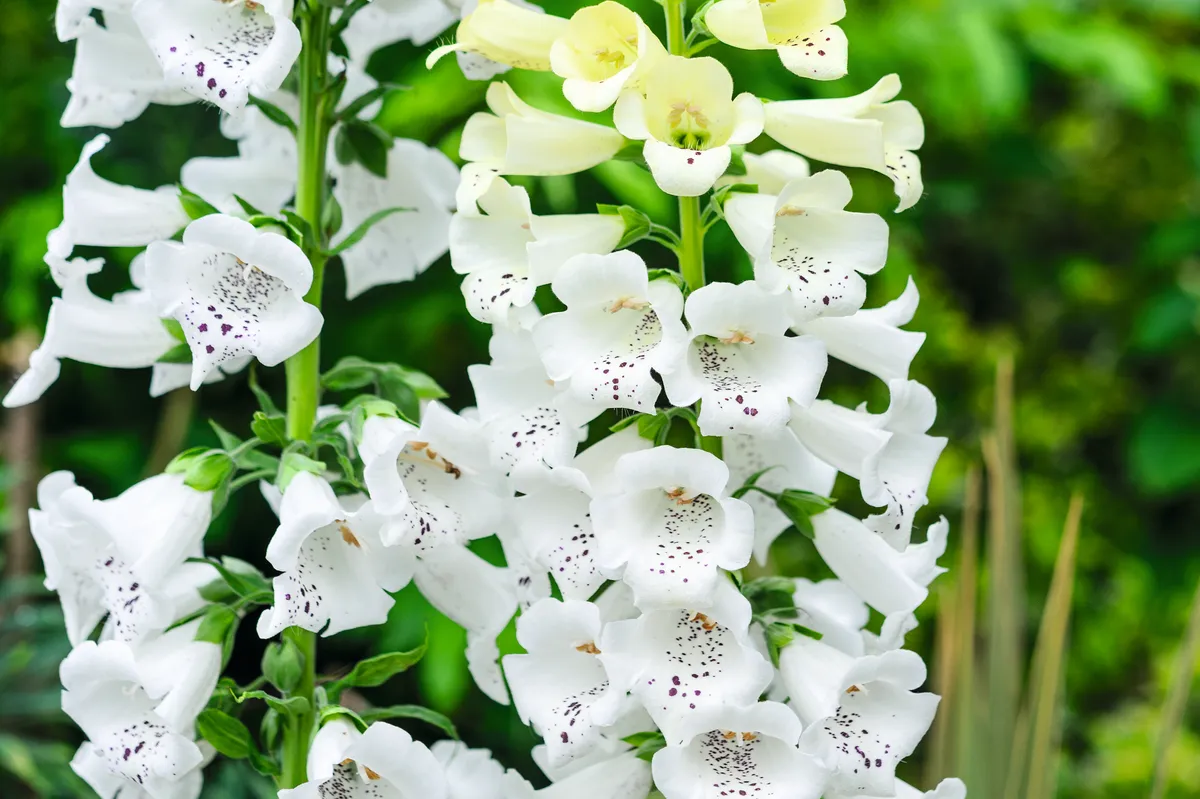
A foxglove of considerable presence and poise. Its dense spikes of upward-pointing, pure-white flowers – their throats lightly speckled with burgundy – emerge from creamy-yellow buds and are held upright all round the stem.
Height 80cm. Hardiness USDA 4a-8b.
Digitalis parviflora
SQUIRREL_TEXT_13100310
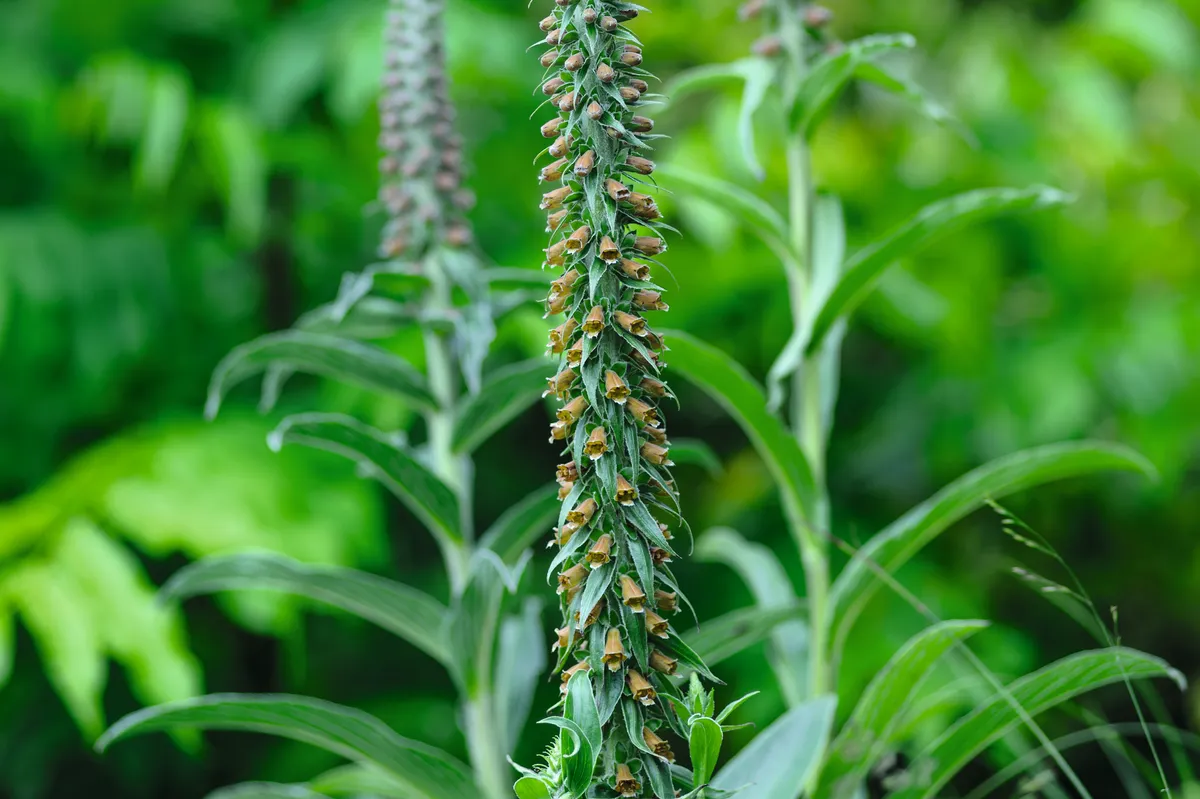
Compact, with deep-green leaves and slender spikes of bronze-brown flowers. If this foxglove's mainstem is cut back after flowering, further smaller flower spikes will grow. Thrives in sun or part shade.
Height 90cm. Hardiness RHS H5, USDA 3a-8b.
SQUIRREL_13100310
Digitalis purpurea 'Dalmation Peach'
SQUIRREL_TEXT_13100312
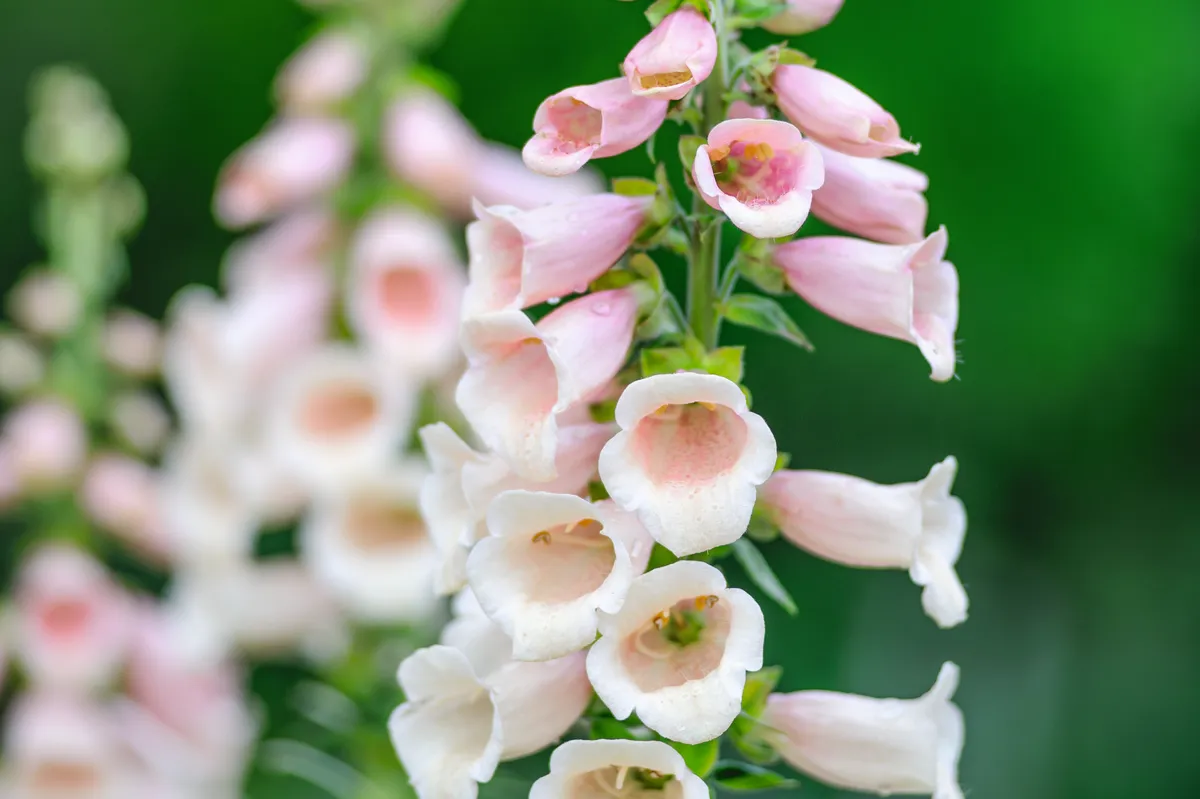
This elegant, understated short-lived perennial foxglove produces small bells of subtle pink around the stems. Ideal in a pot or as a companion to pale-blue campanulas.
Height 60cm. Hardiness USDA 4a-8b.
SQUIRREL_13100312
Digitalis grandiflora
SQUIRREL_TEXT_13100313
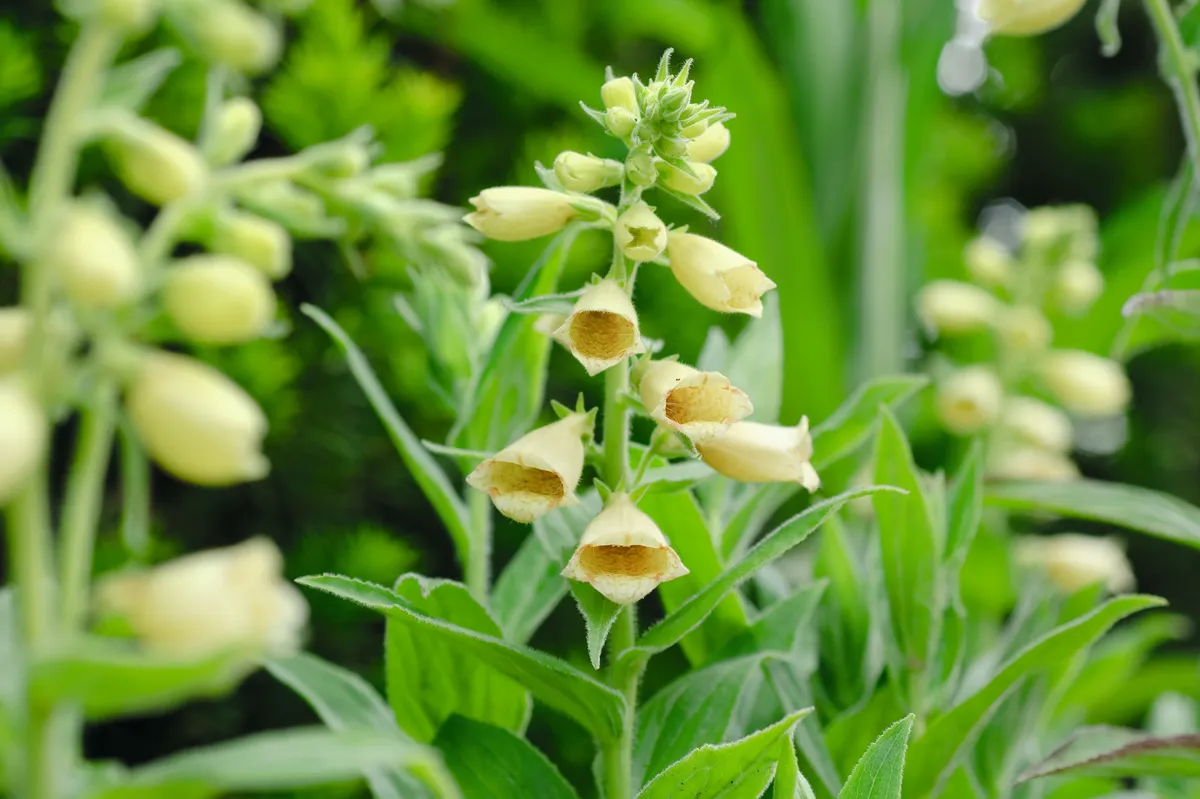
This clump-forming perennial boasts large, pretty, primrose-yellow flowers with pointed petals. Its soft tones combine well with almost any other colour. Herbaceous so dies back in winter.
Height 60cm. Hardiness RHS H6, USDA 4a-8b.
SQUIRREL_13100313
Digitalis obscura
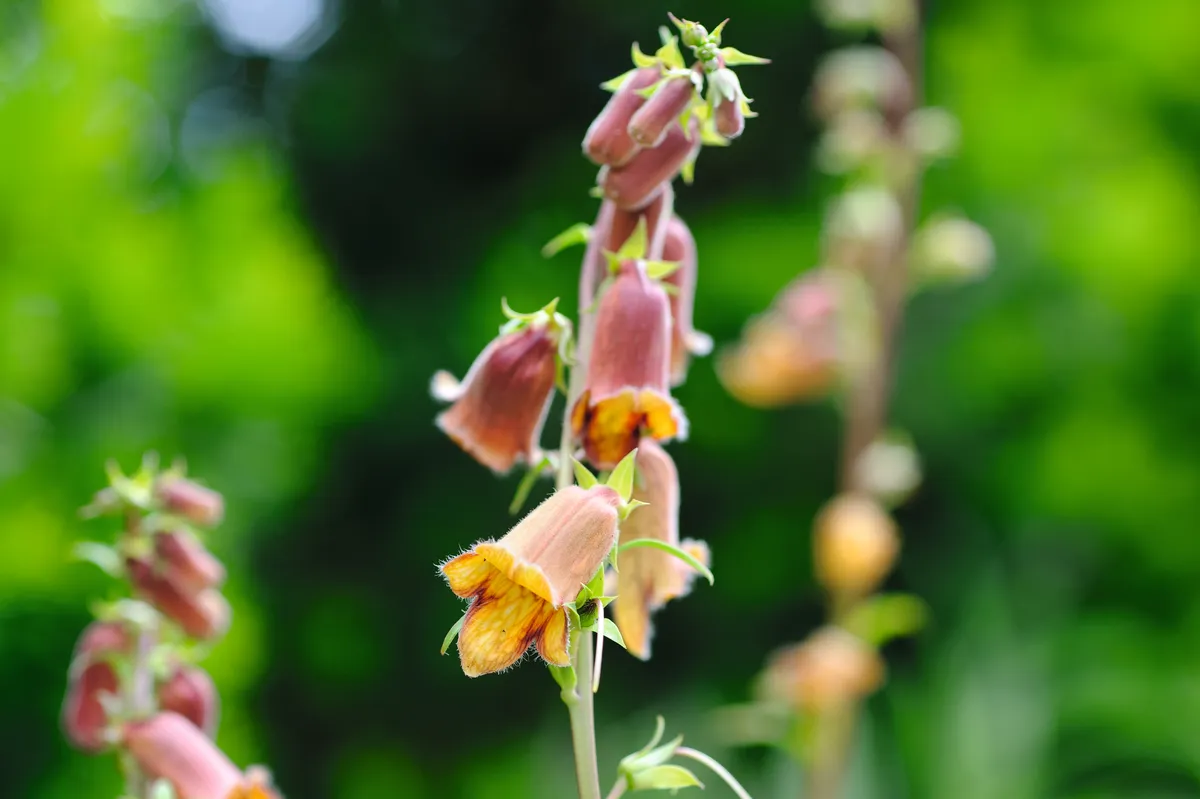
Perennial foxglove sub-shrub with leathery, deep-green leaves. The orange-to-brown, funnel-shaped flowers are marked in the throat with netted veins and spots. Needs full sun and excellent drainage.
Height 40cm. Hardiness RHS H3, USDA 4a-8b.
Digitalis ferruginea
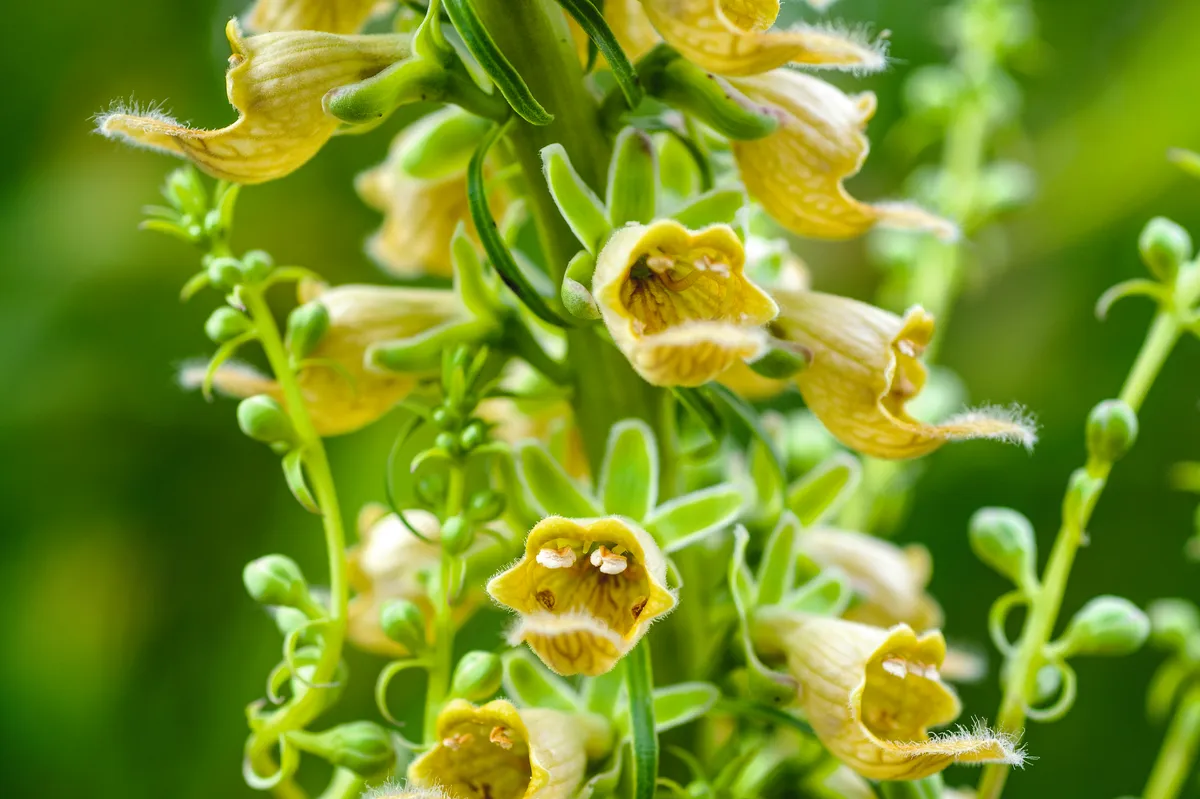
Striking, honey-coloured flowers, which are attractive to bees, are densely packed around the stiff spires of this elegant foxglove perennial. An architectural plant in both summer and winter.
Height 1.8m. Hardiness RHS H6, USDA 4a-8b.
Digitalis lanata
SQUIRREL_TEXT_13100317
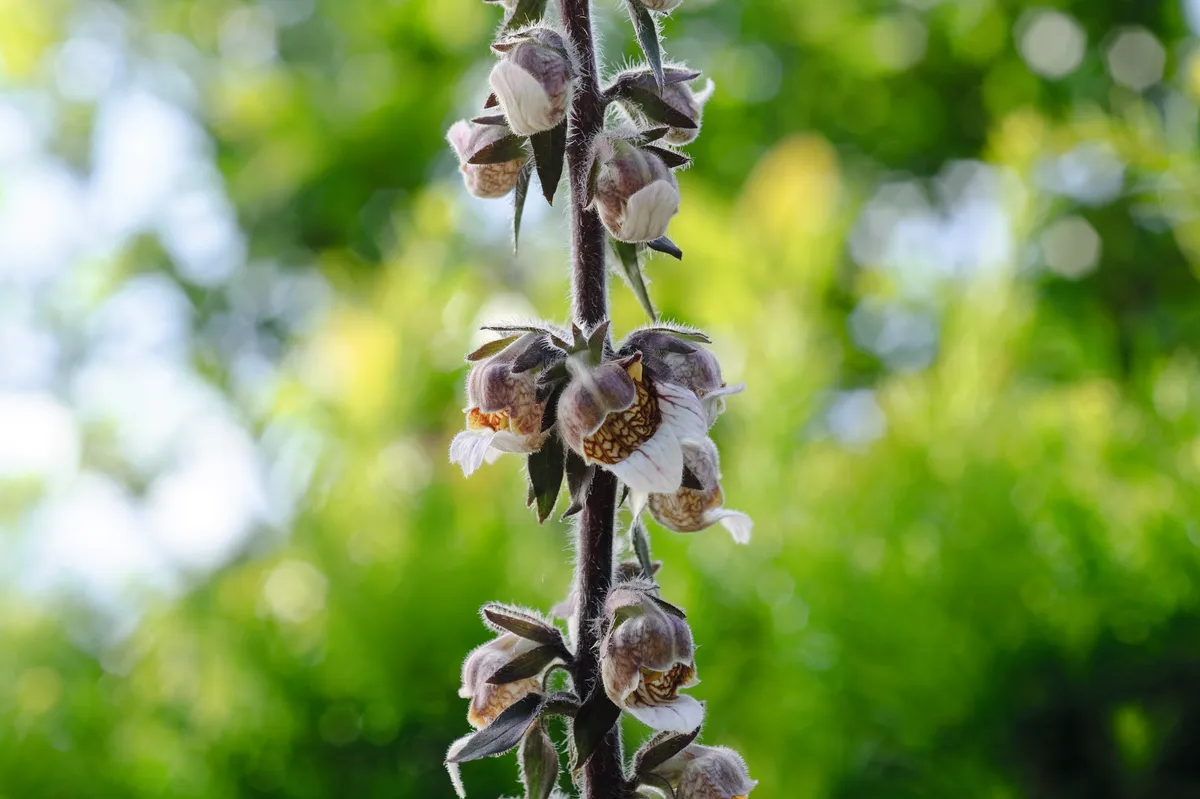
Small, pale-tan flowers, marked with violet-brown veins, and held on broad spikes, spring from a rosette of dark-green leaves and have a protruding curved, white lip. This foxglove is covered in tiny hairs.
Height 1m. Hardiness RHS H5, USDA 3a-9b.
SQUIRREL_13100317
Where to see and buy foxgloves
- The Botanic Nursery, Stonar School Walled Garden, Coombe Lane, Atworth, Melksham, Wiltshire SN12 8NU - Open March to October, offers the widest range of foxgloves in the British Isles and holds the National Collection.
- Hardy’s Cottage Garden Plants, Priory Lane Nursery, Freefolk Priors, Whitchurch, Hampshire RG28 7FA
- Long Acre Plants, Charlton Musgrove, nr Wincanton, Somerset BA9 8EX